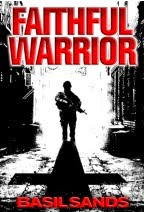On Nov. 15, 2003, an 85-year-old retired Marine Corps colonel died of congestive heart failure at his home in La Quinta, California, southeast of Palm Springs.
He was a combat veteran of World War II. Reason enough to honor him. But this Marine was a little different. His name was Mitchell Paige.
It?s hard today to envision, or for a fast dwindling few, to remember what the world looked like on 26 Oct 1942.
The U.S. Navy was not the most powerful fighting force in the Pacific. Not by a long shot. So the Navy basically dumped a few thousand American Marines on a lonely beach at Guadalcanal and, after losing several destroyers, high-tailed it out of there.
On Guadalcanal the Marines pressed forward and took the islands airfield. As they struggled to complete the repairs needed to land aircraft there prepared a massive counter attack.
Japanese Admiral Yamamoto knew that if the Marines kept that airfield they would endanger his ships in their advance towards Australia. No effort would be spared to dislodge the Marines. Relentless Japanese counterattacks had driven supporting U.S Navy from inshore waters.
The Marines were on their own.
As Platoon Sgt. Mitchell Paige and his 33 riflemen set about carefully emplacing their four water-cooled .30-caliber Brownings, manning their section of the thin khaki line which was expected to defend Henderson Field against the assault of the night of 25 Oct 1942, it?s unlikely anyone thought they were about to provide the definitive answer to that most desperate of questions:
How many U.S. Marines does it take to hold a hill against 2,000 desperate and motivated attackers?
Nor did the commanders of the mighty Japanese Army, who had swept every nation in their path before them for decades, expect their advance to be halted on some jungle ridge manned by one thin line of Yanks in khaki in October of 1942
The Japanese focused their attack on the hill manned by Paige and his platoon. Among the 90 American dead and seriously wounded that night were all the men in Mitchell Paige?s platoon; every one. As the night of endless attacks wore on, Paige moved up and down his line, pulling his dead and wounded comrades back into their foxholes and firing a few bursts from each of the four Brownings in turn, convincing the Japanese forces down the hill that the positions were still manned.
The citation for Paige?s Congressional Medal of Honor picks up the tale:
"When the enemy broke through the line directly in front of his position, P/Sgt. Paige, commanding a machinegun section with fearless determination, continued to direct the fire of his gunners until all his men were either killed or wounded. Alone, against the deadly hail of Japanese shells, he fought with his gun and when it was destroyed, took over another, moving from gun to gun, never ceasing his withering fire.?
In the end, Sgt. Paige picked up the last of the 40-pound, belt-fed Brownings?the same design which John Moses Browning famously fired for a continuous 25 minutes until it ran out of ammunition, glowing cherry red, at its first U.S. Army trial?and did something for which the weapon was never designed. Sgt. Paige walked down the hill toward the place where he could hear the last Japanese survivors rallying to move around his flank, the belt-fed gun cradled under his arm, firing as he went.
The weapon did not fail.
Coming up at dawn, battalion executive officer Major Odell M. Conoley was first to discover the answer to our question: How many able-bodied Marines does it take to hold a hill against two regiments of motivated, combat-hardened infantrymen who have never known defeat?
On a hill where the bodies were piled like cordwood, Mitchell Paige alone sat upright behind his 30-caliber Browning, waiting to see what the dawn would bring.
By the time the night was over there were nearly a thousand enemy soldiers dead or wounded.
Thereby answering the above question.
One hill: one Marine.
Years later the Hasbro Toy Company telephoned then retired Colonel Mitchell Paige asking permission to put the retired Colonel?s face on some kid?s doll.
Mitchell Paige had thought they must be joking.
But they weren?t.
His face became an icon for a generation of boys destined for the military.
They saw it on their dressers, on the living room floor and crawling through their backyards every time they looked at the little warrior they called ?G.I. Joe.?
And you probably thought that was an ARMY Doll....!!!
Sphere: Related Content
















 Stumble It!
Stumble It!
No comments:
Post a Comment